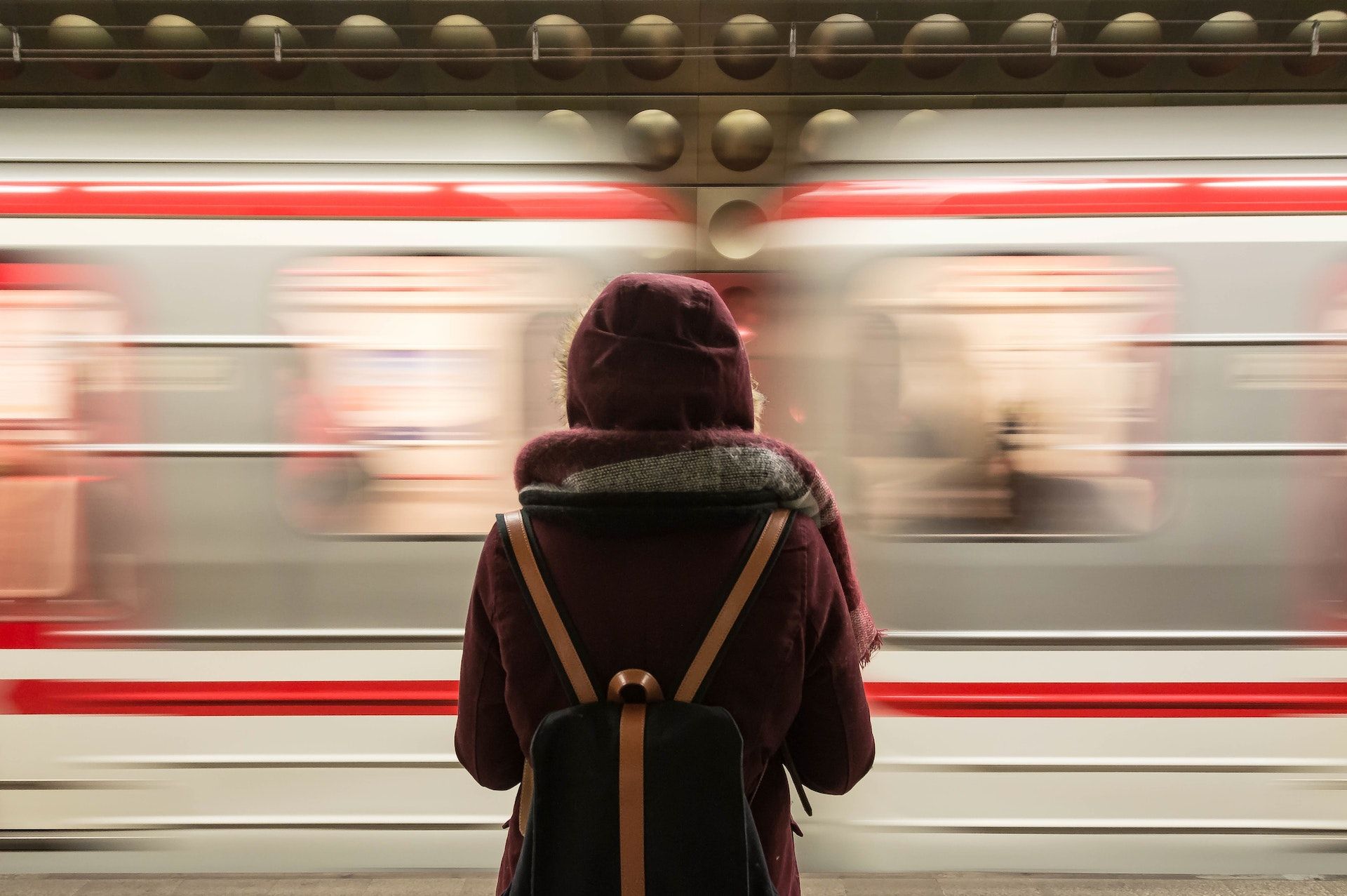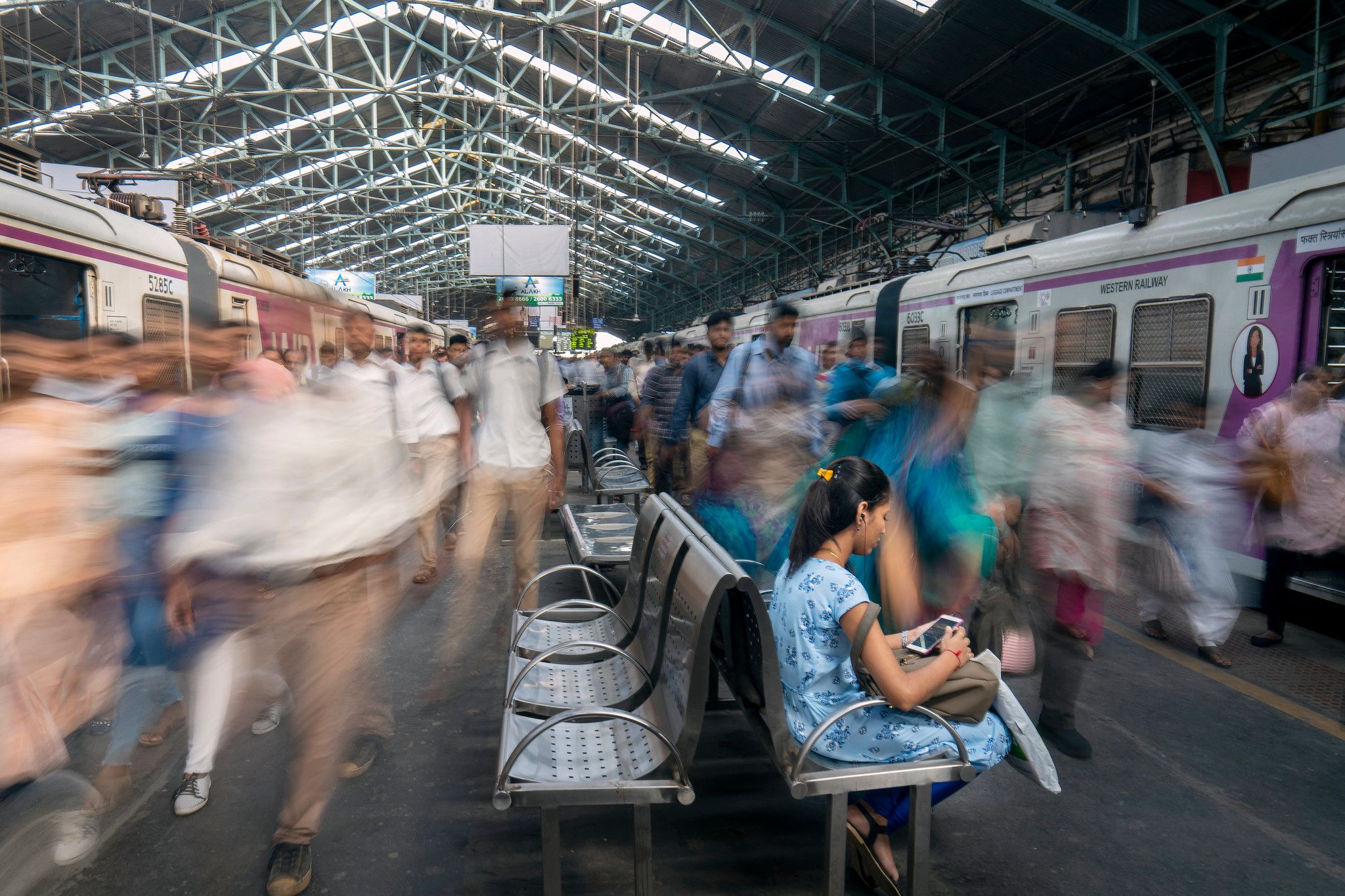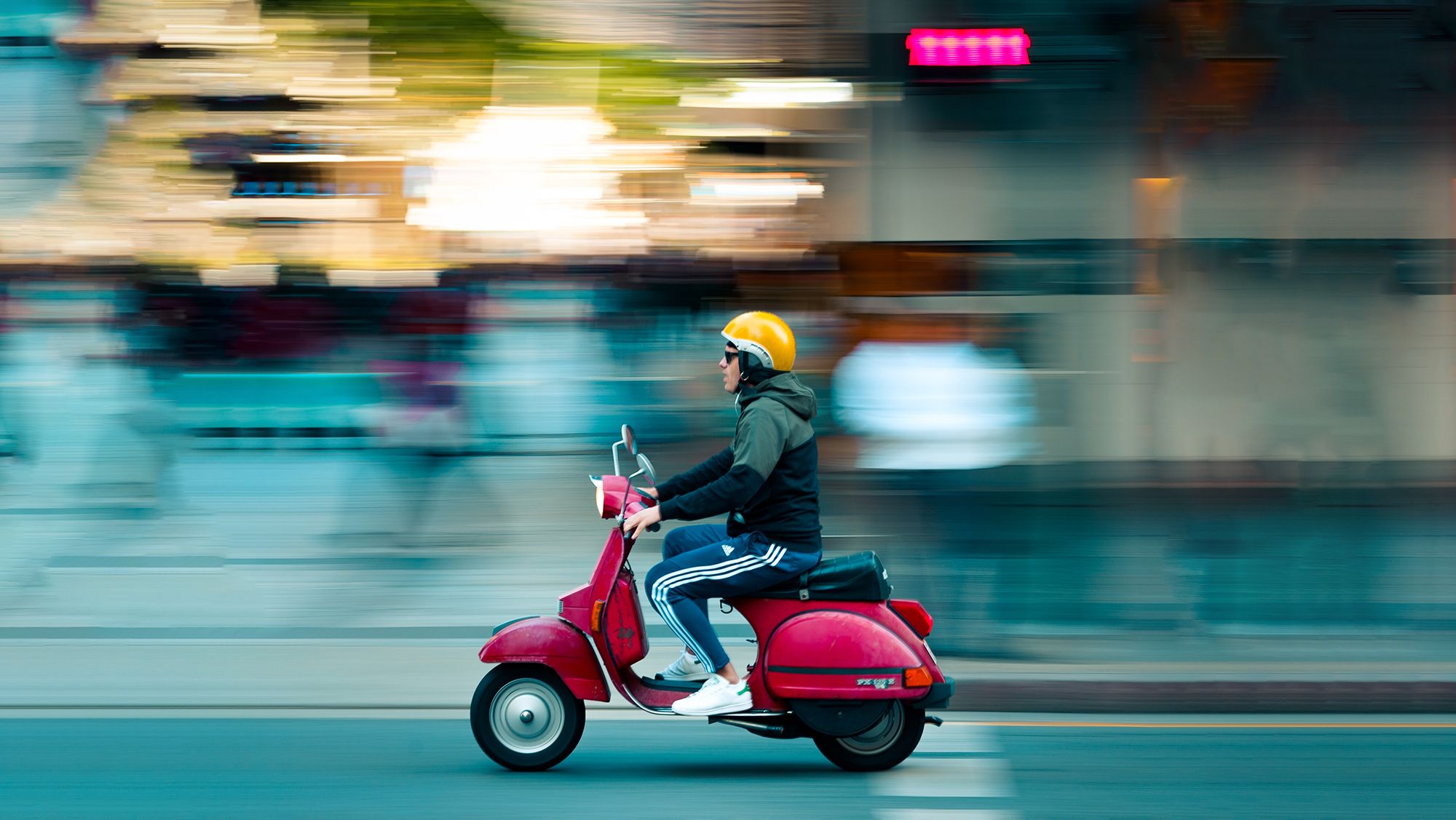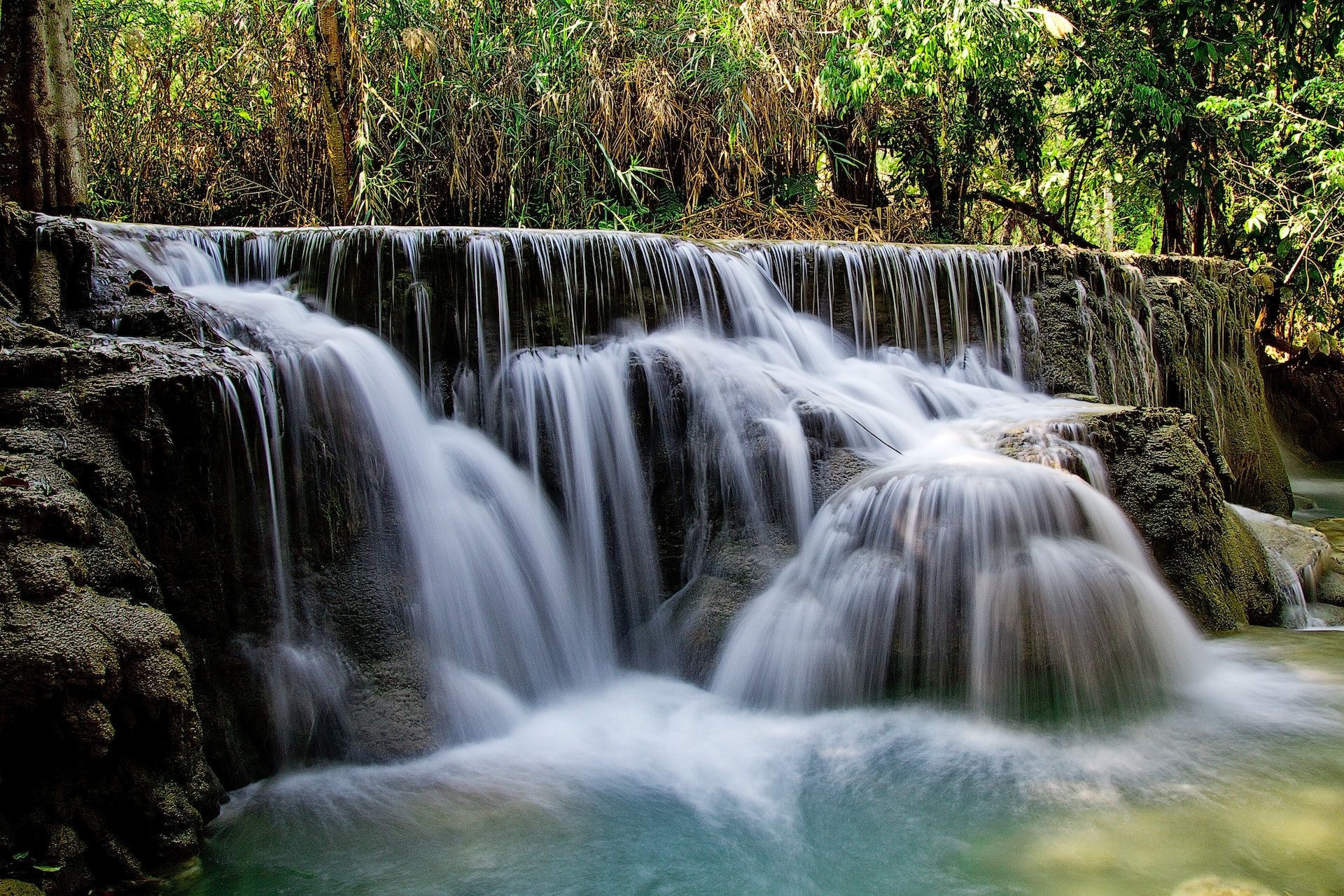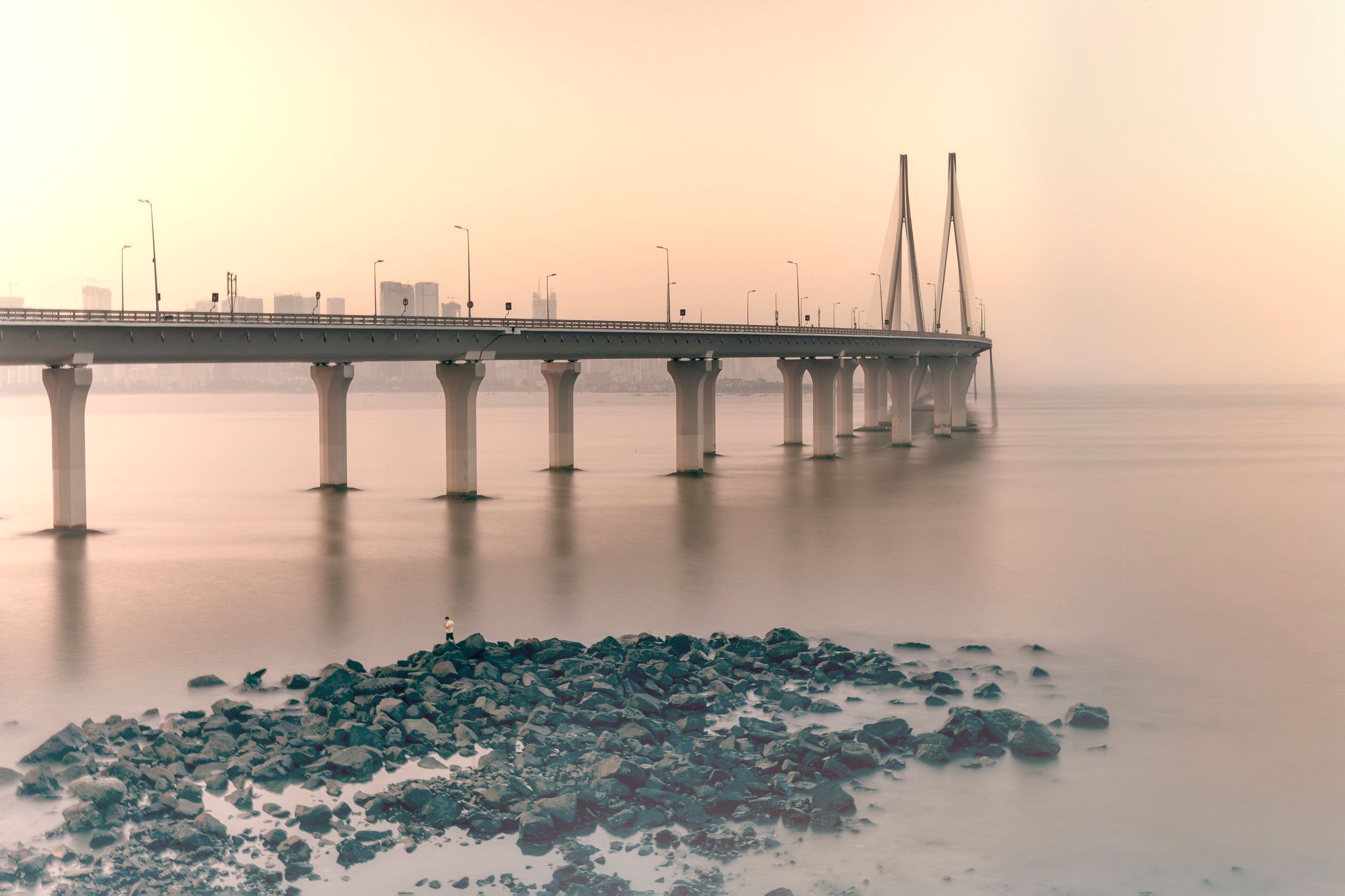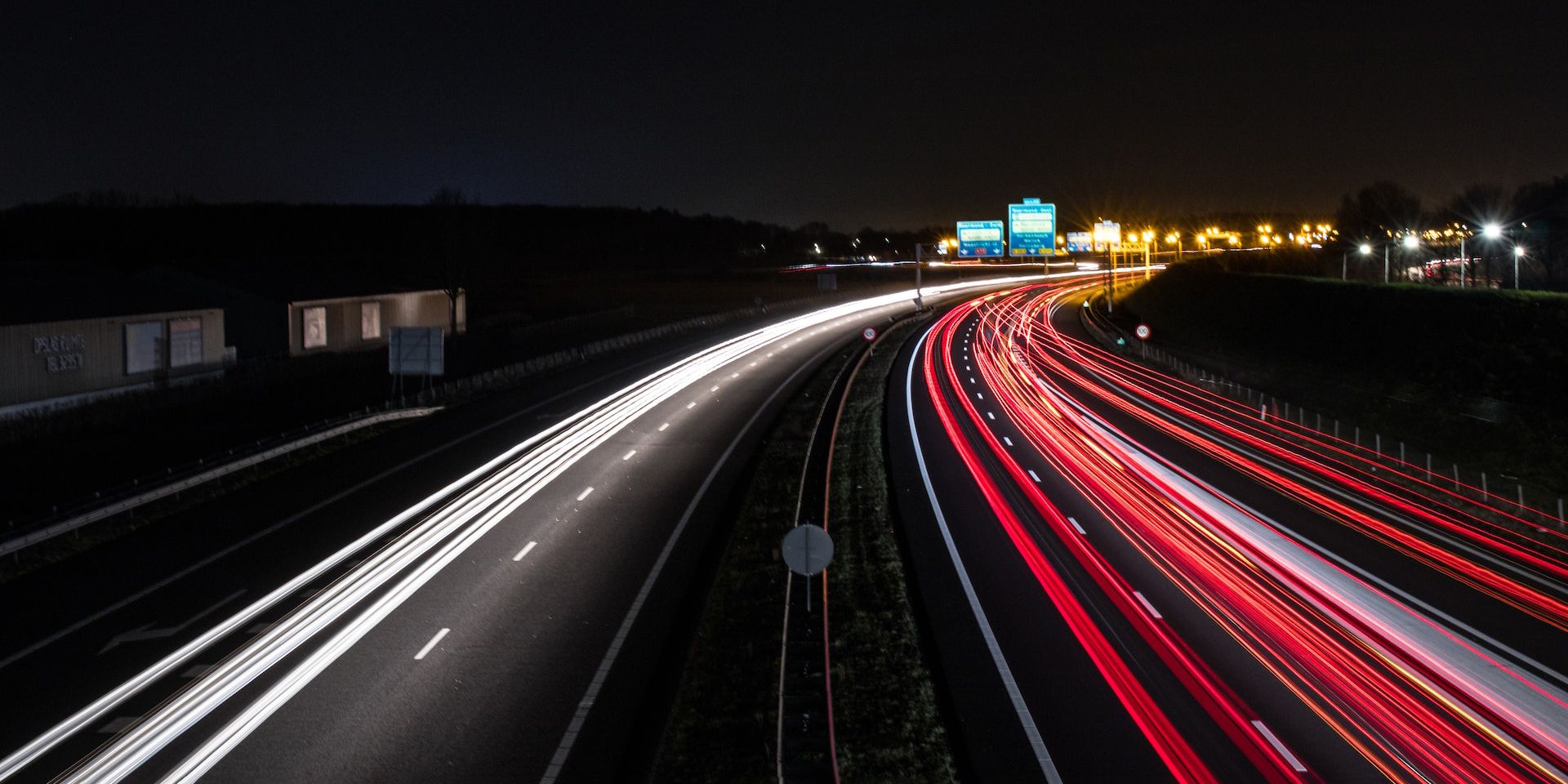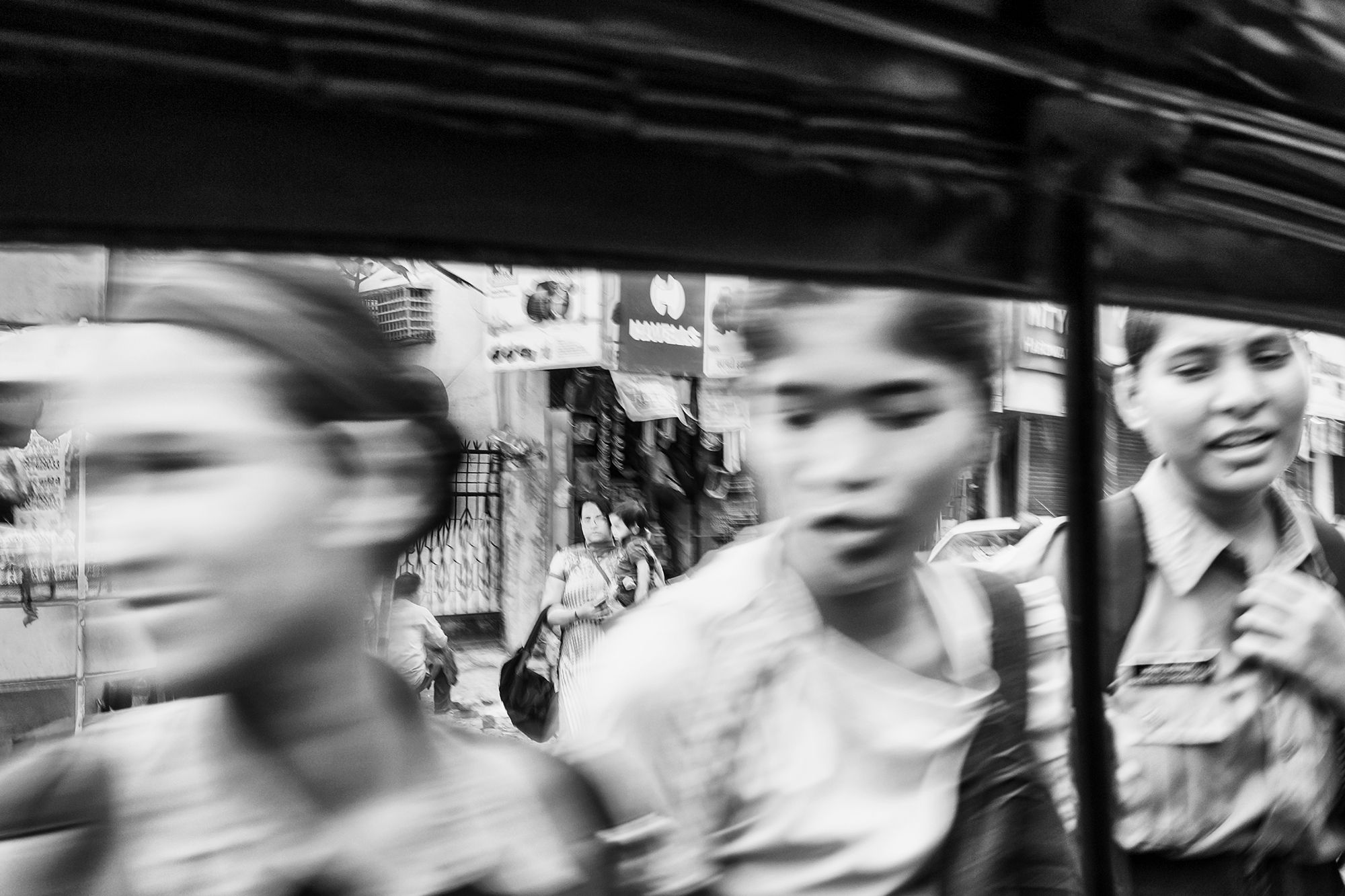How to Capture Motion Blur in Photography
Adding motion blur to your photography can add a sense of emotion and movement, bringing life to an image that would otherwise be still or even boring. In this article, we’re going to talk about the different types of motion blur and how to achieve them in your photography.
The basics of capturing motion blur with your camera
One of two things has to happen in order to capture motion blur with your camera. Either your subject needs to move or your camera needs to simulate movement, either by physically moving the camera or by setting a slow shutter speed. We’ll talk more about that later.
In the picture above, a woman is standing and we see a blurry train rushing by. For this photo, the photographer set a relatively fast shutter speed to freeze the woman in place, while the train’s movement was fast enough to cause motion blur.
We have about the same situation in the photo of the woman sitting and sitting still, and the crowd seems to be blurry. The main difference between the two images is the shutter speeds. To apply motion blur to the crowd, a half-second shutter speed was used to capture the movement of people walking.
Both images required the photographer to determine the best shutter speed for the best motion blur effect. Now let’s talk about the specifics and techniques you can use to capture motion blur in your photos.
How to capture motion blur by panning
Panning or tracking a moving subject with your camera is probably one of the easiest ways to capture dramatic motion blur. The basic idea is to choose a slower shutter speed that blurs the background enough while freezing the subject a bit. The above image of the person riding the scooter is a perfect example of panning, where motion blur has been applied to most of the frame while keeping the subject comparatively sharp.
To capture motion blur by panning, start with a shutter speed of 1/30 to 1/125 second. How fast the subject is moving will be the deciding factor. A slower moving vehicle may require as little as 1/30 second, while a fast vehicle may require even slower shutter speeds of 1/200 second or more. We’re talking about shutter speed mistakes to avoid.
Here are some additional considerations for capturing motion blur through panning:
- If your camera or lens has an image stabilization feature, make sure it is turned off.
- Use shutter priority mode or manual mode on your camera. If you take photos with your smartphone, it may be called Pro or Professional mode. Essentially, you want to set the exact shutter speed and let your camera do the rest (like aperture and ISO) to ensure correct exposure.
- Set your drive mode to continuous shooting. The more shots you can take, the better chance you have of getting a nice blurry photo when you pan your camera.
Like most techniques in photography, panning takes practice to achieve the desired results. Don’t be afraid to experiment with different shutter speeds and angles.
How to capture motion blur using a long exposure and a tripod
We’ve already discussed using slow shutter speeds to capture motion blur. However, when we refer to long exposure photography, we are usually referring to slow shutter speeds of a second or more to completely blur subjects for creative effect.
A tripod is usually required to stabilize the camera as it is not possible to hold a camera perfectly still to keep your intended subject sharp and in focus. Here are the things to consider when you’re in the market for a new tripod.
Photographers use long exposure photography to create motion blur for numerous subjects. In fact, you can use long exposure techniques on just about any subject where you want one or more things to move and you want the background to be blurred.
We take a look at two popular themes, water and night traffic. Both are beautiful subjects that are popular with photographers because the motion blur is dramatic when done right.
Motion blur with water
The photographer wanted to smooth out the water in the bridge image above. To do this, he set up his camera on a tripod and set a long exposure time of 30 seconds. The result is a nice blur on the water while everything else is sharp, including the man on the rocks below.
When shooting long exposure photography, there are several factors to consider when trying to capture motion blur:
- In most cases, you will need a 6-10 stop neutral density filter to allow for long exposures without overexposing the image.
- Set the ISO to the lowest value your camera will allow. Values vary by brand and usually start somewhere between 50 and 100.
- The aperture is usually stopped down to the smallest opening that corresponds to the largest f-number. This value is usually between f/16 and f/22 and higher, depending on the lens.
For best results, shoot during the golden hour, either sunrise or sunset. The quality of light is extremely important to complement motion blur photography, and arguably most photography. We talk in more detail about what and when the golden hour is.
Motion blur with night traffic
You’ve seen these types of images where the headlights of passing traffic are blurry and look like solid lines along roads and highways. This is another good example of long exposure photography resulting in creative motion blur.
It should be noted that since these photos are taken at night, an ND filter is not required. And while your shutter speed can still be slow, you probably won’t need slow shutter speeds like 30 seconds or more. A second or two may be enough to capture traffic on the freeway.
Here are some considerations for capturing night time motion blur with long exposure:
- Set your camera to Manual mode or Pro mode if using a smartphone.
- Start with a shutter speed of one second, then adjust according to the speed of your subject.
- The aperture does not necessarily have to be fully stopped down. Depending on how much light you have, you may need to open the aperture to let in more light.
Whatever the subject, a tripod is essential to capture motion blur in long exposure night shots.
How to use the Doppler effect to create motion blur
We left one of the more interesting and probably least mentioned motion blur effects in photography for last, the Doppler effect. You may already be familiar with the Doppler Effect, if not by definition then through a common experience many people have shared at some point in their lives; the sounds of passing police or emergency vehicle sirens.
Essentially, the Doppler effect means that the closer the source is to the frequency, the smaller and more intense the sound waves are. The further away the source is, the longer the sound waves are and the less intense they are.
The same principle applies to photons and their wavelengths in the world of photography. When it comes to motion blur, the closer the subject, the more intense the blur effect. The further away the subject is, the less blurry the effect will be.
The above image of the three girls is a perfect example of the Doppler Effect. The shutter speed was set at 1/40 second, a relatively slow shutter speed. The photographer snapped the picture from a slow-moving vehicle as the girls crossed the street. You’ll notice that the first girl on the left is the most blurred because she’s closest to the photographer, while the third girl, further away, is less blurred.
It’s important to note here that there is also an additional factor that contributes to the blur effect: focus. The main focus is on the woman in the far background, but the motion blur of the Doppler effect still provides enough movement element.
It can take practice to capture an appealing motion blur with the Doppler effect. Start photographing people and objects from a moving vehicle. Be sure to use a slower shutter speed and be aware of where your focus is to get good results.
Spice up your photography with motion blur
There are several ways to create beautiful motion blur with your camera, and often you don’t need a lot of extra equipment to pull it off. With practice, you’ll find it easier to add motion blur to a photo, and these tips and methods should help.
